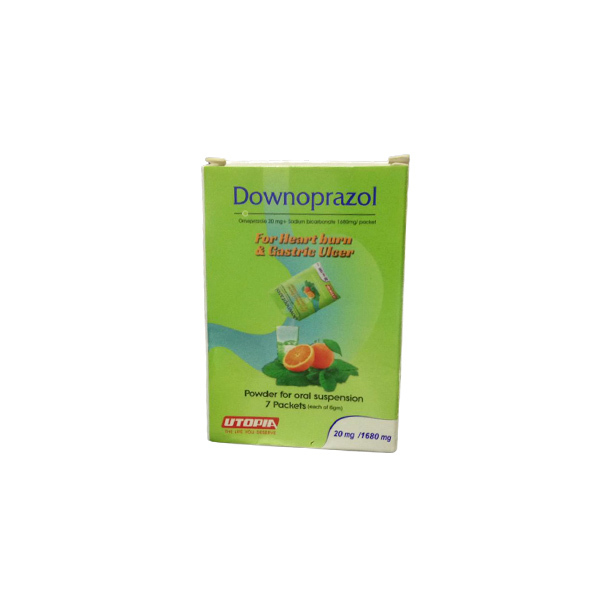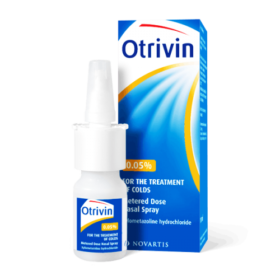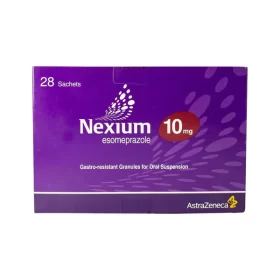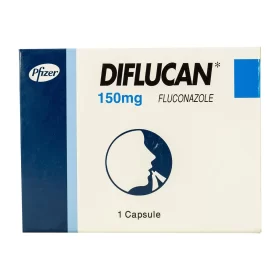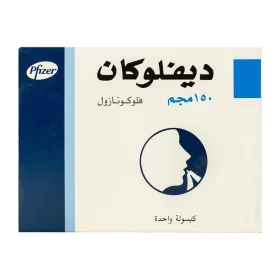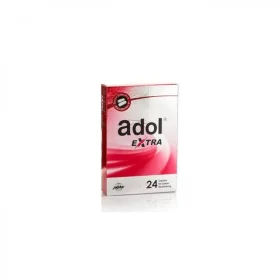- Your cart is empty
- Continue Shopping
7 x 6 gr
Medical Description
Antacid and proton pump inhibitor combination therapy used in the treatment of Gastroesophageal reflux disease, treatment and secondary prevention of peptic ulcer disease.
Indication & Usage
Warning:The dose below is calculated based on the omeprazole component only.(Sodium bicarbonate component of this medication can be taken in a dose of 325 mg to 2 g once to four times/day). -Gastroesophageal reflux disease:Initial therapy:Mild/intermittent disease (<2 episodes/week) and no evidence of erosive esophagitis:Oral: 10 mg once daily; can increase to 20 mg once daily after 4 to 8 weeks if necessary. Discontinue once asymptomatic for 8 weeks.Severe and/or frequent symptoms (≥2 episodes/week) and/or erosive esophagitis:Oral: 20 to 40 mg once daily; once symptoms are controlled, continue for at least 8 weeks. -Heartburn, frequent symptoms (≥2 episodes/week):Oral: 20 mg once daily for 14 days (maximum: 20 mg/day); may repeat a 14-day course every 4 months if needed. -Treatment and secondary prevention of peptic ulcer disease:Uncomplicated ulcer:Oral: 20 to 40 mg once daily. Duration depends on the size, location, and cause of the ulcer and ranges from 4 to 8 weeks. In patients with refractory or recurrent disease, may increase the dose to 20 to 40 mg twice daily. -Stress ulcer prophylaxis in select critically ill patients: Oral or via NG tube (oral suspension or capsule [off label]): 40 mg once daily or 40 mg initially, then another 40 mg dose given 6 to 8 hours later, followed by 40 mg once daily. -Pediatric dosing: Erosive esophagitis: Treatment: Duration of therapy is dependent on age: Infant duration is up to 6 weeks and children and adolescent duration is 4 to 8 weeks. For recurrence of erosive esophagitis or gastroesophageal reflux disease (GERD) symptoms, an additional 4- to 8-week course may be considered.Infants, Children, and Adolescents: Oral: 3 to <5 kg: 2.5 mg once daily, 5 kg to <10 kg: 5 mg once daily, 10 kg to <20 kg: 10 mg once daily, ≥20 kg: 20 mg once daily. Maintenance of healing: Children and Adolescents: Oral:5 kg to <10 kg: 5 mg once daily, 10 kg to <20 kg: 10 mg once daily, ≥20 kg: 20 mg once daily.
Active Ingredients
Sodium Bicarbonate
Omeprazole
Dosage & Administration
-Administer 30 to 60 minutes before a meal; best if taken before breakfast. If administering twice daily, first dose should be administered before breakfast and the second dose before dinner. -Powder for oral suspension: Administer 1 hour before a meal. Mix with 5 to 10 mL of water; stir well and drink immediately. Rinse cup with water and drink. Do not use other liquids or sprinkle on food.
Side Effects
-Side effects due to Omeprazole: omeprazole, may increase risk of enteric infections in adult and pediatric patients, including gastroenteritis and Clostridioides difficile associated diarrhea (CDAD). Long-term use of acid suppressive therapies, including omeprazole, may result in reversible vitamin B12 deficiency. Respiratory system disorder, skin rash abdominal pain, constipation, diarrhea, flatulence, nausea, vomiting, dizziness, headache, asthenia, back pain, cough, upper respiratory infection. -Side effects due to sodium bicarbonate: Cardiac failure, edema, cerebral hemorrhage, hypernatremia, hypocalcemia, hypokalemia, metabolic alkalosis, milk-alkali syndrome (especially with renal dysfunction), abdominal distention, eructation,flatulence,tetany, pulmonary edema.
Safety Advice
-In patients who have received continuous therapy for >6 months, gradually taper therapy until discontinuation to avoid worsening or rebound symptoms. If the patient is receiving 40 mg once or twice daily, decrease the dose by 50% every week. For patients receiving twice-daily dosing, the first dose reduction can be achieved by decreasing to once-daily. -Hepatic Impairment: Adult: Mild to severe impairment: 10 mg once daily when used for maintenance of healing of erosive esophagitis. -Should not be used in case of Hypersensitivity (eg, anaphylaxis, anaphylactic shock, angioedema, bronchospasm, acute tubulointerstitial nephritis, urticaria) to omeprazole, -Prolonged treatment (≥2 years) may lead to malabsorption of dietary vitamin B12 and subsequent vitamin B12 deficiency. -Incase of over dose be ready to tell or show what was taken, how much and when it happened, and seek immediate medical attention. For additional information call us on 16676. Always tell your physician your detailed medical history.
Storage
Store at room temperature.
Drug Interactions
Interactions Due to Omeprazole: -Bisphosphonate Derivatives: Inhibitors of the Proton Pump (PPIs and PCABs) may diminish the therapeutic effect of Bisphosphonate Derivatives -Cefpodoxime: Inhibitors of the Proton Pump (PPIs and PCABs) may decrease the serum concentration of Cefpodoxime. -Cefuroxime: Inhibitors of the Proton Pump (PPIs and PCABs) may decrease the absorption of Cefuroxime -Cilostazol: Omeprazole may increase serum concentrations of the active metabolite(s) of Cilostazol. -Citalopram: Omeprazole may increase the serum concentration of Citalopram. -Clopidogrel: Omeprazole may diminish the antiplatelet effect of Clopidogrel. -Doxycycline: Inhibitors of the Proton Pump (PPIs and PCABs) may decrease the bioavailability of Doxycycline -Escitalopram: Omeprazole may increase the serum concentration of Escitalopram. -Gliclazide: Omeprazole may increase the serum concentration of Gliclazide. -Itraconazole: Inhibitors of the Proton Pump (PPIs and PCABs) may increase the serum concentration of Itraconazole -Methotrexate: Inhibitors of the Proton Pump (PPIs and PCABs) may increase the serum concentration of Methotrexate. -Multivitamins/Minerals (with vitamins ADEK, Folate, Iron): Inhibitors of the Proton Pump (PPIs and PCABs) may decrease the serum concentration of Multivitamins/Minerals (with vitamins ADEK, Folate, Iron). -Vitamin K Antagonists (eg, warfarin): Omeprazole may increase the serum concentration of Vitamin K Antagonists. Interactions due to sodium bicarbonate: -Bisacodyl: Antacids may diminish the therapeutic effect of Bisacodyl. -Captopril: Antacids may decrease the serum concentration of Captopril. -Cefuroxime: Antacids may decrease the serum concentration of Cefuroxime. -Corticosteroids: Antacids may decrease the bioavailability of Corticosteroids. -Iron Preparations: Antacids may decrease the absorption of Iron Preparations. -Rosuvastatin: Antacids may decrease the serum concentration of Rosuvastatin.
Pregnancy & Lactation
-Available data have not shown an increased risk of major birth defects following maternal use of omeprazole during pregnancy. Based on available data, PPIs may be used when clinically indicated. -Omeprazole is present in breast milk. The relative infant dose (RID) of omeprazole is 0.2% to 0.43%. In general, breastfeeding is considered acceptable when the RID is <10%. -Antacids containing sodium bicarbonate should not be used during pregnancy due to their potential to cause metabolic alkalosis and fluid overload in the mother and fetus -Sodium is found in breast milk


